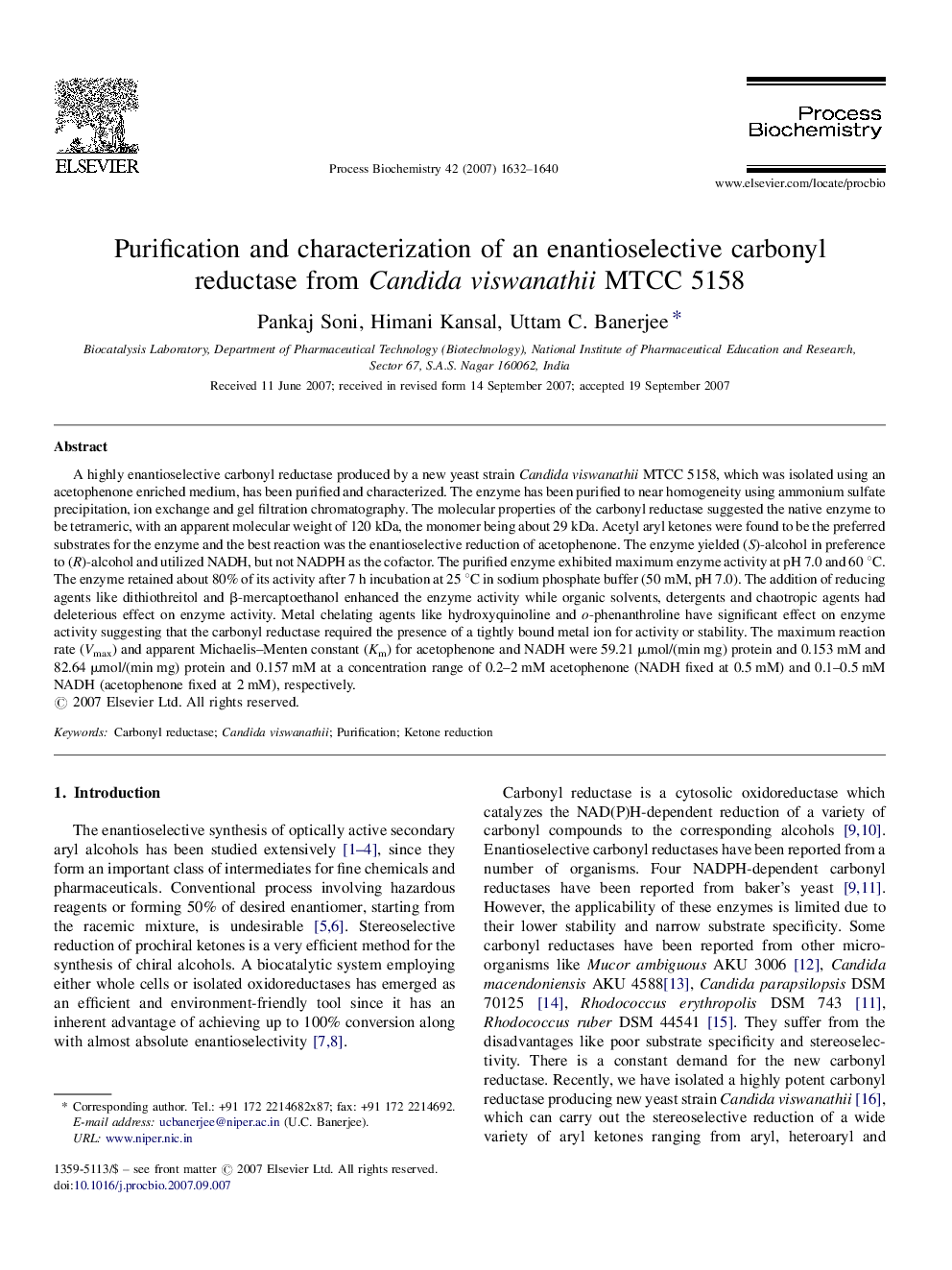| Article ID | Journal | Published Year | Pages | File Type |
|---|---|---|---|---|
| 35901 | Process Biochemistry | 2007 | 9 Pages |
A highly enantioselective carbonyl reductase produced by a new yeast strain Candida viswanathii MTCC 5158, which was isolated using an acetophenone enriched medium, has been purified and characterized. The enzyme has been purified to near homogeneity using ammonium sulfate precipitation, ion exchange and gel filtration chromatography. The molecular properties of the carbonyl reductase suggested the native enzyme to be tetrameric, with an apparent molecular weight of 120 kDa, the monomer being about 29 kDa. Acetyl aryl ketones were found to be the preferred substrates for the enzyme and the best reaction was the enantioselective reduction of acetophenone. The enzyme yielded (S)-alcohol in preference to (R)-alcohol and utilized NADH, but not NADPH as the cofactor. The purified enzyme exhibited maximum enzyme activity at pH 7.0 and 60 °C. The enzyme retained about 80% of its activity after 7 h incubation at 25 °C in sodium phosphate buffer (50 mM, pH 7.0). The addition of reducing agents like dithiothreitol and β-mercaptoethanol enhanced the enzyme activity while organic solvents, detergents and chaotropic agents had deleterious effect on enzyme activity. Metal chelating agents like hydroxyquinoline and o-phenanthroline have significant effect on enzyme activity suggesting that the carbonyl reductase required the presence of a tightly bound metal ion for activity or stability. The maximum reaction rate (Vmax) and apparent Michaelis–Menten constant (Km) for acetophenone and NADH were 59.21 μmol/(min mg) protein and 0.153 mM and 82.64 μmol/(min mg) protein and 0.157 mM at a concentration range of 0.2–2 mM acetophenone (NADH fixed at 0.5 mM) and 0.1–0.5 mM NADH (acetophenone fixed at 2 mM), respectively.
